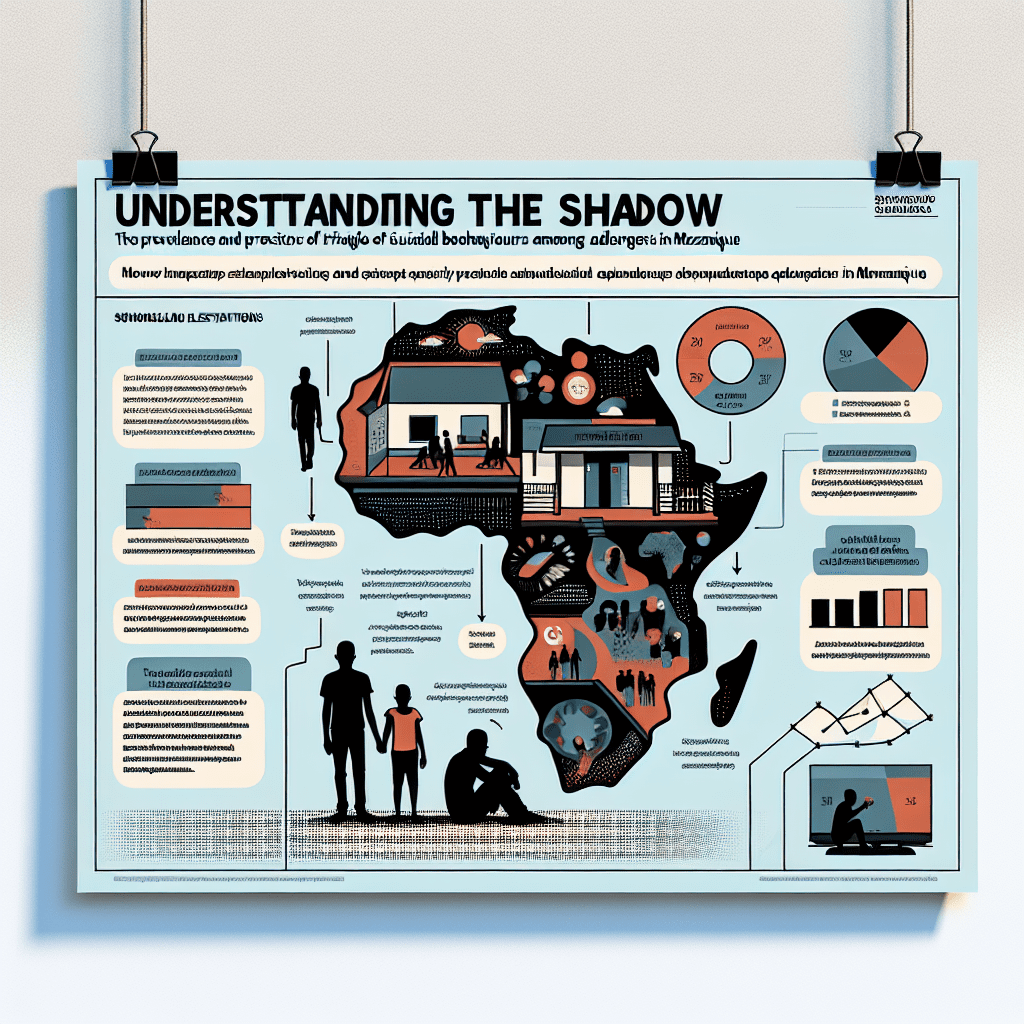Introduction
Imagine a world where young minds harbor dreams and aspirations, yet remain silently burdened with shadows they dare not share. For many adolescents in Mozambique, this is the troubling reality. Suicidal behaviours, a phrase laden with gravity, have silently infiltrated the lives of in-school adolescents. Their struggles are hidden behind the walls of classrooms and the façade of youthful exuberance. How does one begin to unravel the complexities of their minds to better understand and support them?
This exploration stems from a significant research paper which delves deep into the prevalence and predictors of such behaviours, utilizing the Global School-Based Health Survey data from Mozambique. While the Sustainable Development Goal sets a hopeful vision to enhance global mental health by 2030, the stark reality persists—suicidal behaviours remain a leading cause of premature mortality among the young. This study uncovers the paths of despair trodden by many adolescents, shedding light on factors that lead them down these paths and potential barriers that could shield them.
From Hidden Voices to Revealing Numbers
What does it mean when we say 17.7% of adolescents in Mozambique have entertained thoughts of ending their lives? It’s akin to entering a room filled with young people, vibrant and full of potential, only to realize nearly one in five are quietly grappling with inner turmoil. Addressing suicidal behaviours is not merely about numbers; it’s about acknowledging the silent cries that often go unnoticed.
Key findings from the study reveal that 19.6% of adolescents had plans for suicide, while 18.5% made attempts. But why? The study points to anxiety and physical attacks as significant culprits. Consider John, a fictional representation of many real students, who sits quietly at his desk, anxious about the bullying he faces daily. As these pressures mount, John might feel trapped in a cycle with seemingly no escape, driving him toward such dire decisions.
Yet amidst these challenges, the research finds a beacon of hope through social connections. Adolescents, like Sarah who finds solace in her circle of close friends, have reduced chances of suicidal ideation, plans, or attempts. These friendships act as lifelines, accentuating the importance of nurturing supportive environments within schools.
Navigating Complex Pathways: A Deeper Dive
This research paper is a clarion call, reminding us of the profound impact our immediate environments and mental states have on suicidal behaviours. The findings draw parallels with previous studies highlighting similar trends globally. Yet, unique societal and cultural contexts in Mozambique add layers of complexity to these discussions.
Speaking to the heart of psychological theories, such as Albert Bandura’s Social Learning Theory, the study illustrates how social environments profoundly influence behaviours. For instance, adolescents who frequently witness or experience aggression may internalize such hostility, potentially manifesting in suicidal behaviours.
Comparing this study with broader research unveils a universal truth: anxiety is a formidable predictor of suicide across cultures. Consider Lisa, a teenager experiencing anxiety as she prepares for exams, compounded by social isolation due to a lack of supportive friends. This research underscores that access to social support acts as a buffer against such stressors, a sentiment echoed by Bronfenbrenner’s Ecological Systems Theory which emphasizes the protective nature of positive microsystems, like peer networks.
Pinpointing interventions within schools becomes imperative, aligning with educational psychologist Lev Vygotsky’s theories on social interaction and learning—highlighting the potential of educational institutions not just as academic facilitators but as custodians of mental well-being.
Channeling Change: Bringing Research to Life
Understanding these findings is one thing, but how do they translate into actionable steps? The ‘so what?’ of this research lies in its potential to influence policies and practices within educational environments, ensuring they are equipped to address and mitigate suicidal behaviours among adolescents in Mozambique.
Imagine a teacher, previously unaware of the extent of anxiety among students, now empowered with strategies to foster peer support within classrooms. Simple acts, like incorporating group activities that promote interaction and camaraderie, can make a world of difference for students like John and Sarah.
Incorporating resilience-building programs and creating safe spaces for students to discuss their feelings are vital steps. Mozambique’s educational authorities can introduce wellness workshops, where students engage in stress-relief exercises, learn coping mechanisms, and are encouraged to express their anxieties freely.
This research could also prompt initiatives to train school staff in identifying and supporting at-risk students. By establishing a network of mentors who can provide guidance and emotional support, schools can proactively create a safety net, ensuring no student feels isolated or hopeless.
Catalyzing New Beginnings
The interplay between adversity and hope, despair, and support lies at the heart of the intricate discussion of suicidal behaviours among adolescents. This research, while unveiling troubling statistics, also offers a potent reminder of the strength found in community and connection. As we consider the roadmap forward, let us reflect: How do we nurture such communal ties, ensuring every adolescent feels valued, heard, and supported?
In Mozambique—and indeed across the globe—achieving this vision requires a collaborative effort, a shared commitment to understanding these silent struggles and reinvigorating our schools as bastions of mental health support. By shining a light on these shadows, we step closer to fulfilling our collective promise of safeguarding the well-being of future generations.
Data in this article is provided by PLOS.
Related Articles
- Illuminating the Void: Understanding Chronic Emptiness in Borderline Personality Disorder**
- Navigating Cognitive Clarity: How Seniors React to Dementia Screening Results
- The Emotional Puzzle of Sustained Attention: Insights from Aging and Depression
- How Exercise Eases the Ache: Insights from the University Student Experience
- Charting the Path: Understanding Mental Health Trajectories in Germany, Russia, and China
- Empowering Survivors: How Interventions Can Transform Lives through Social Support
- The Smoking Connection: ADHD and Pregnancy
- Bridging Minds and Hearts: Unraveling the Psychological Threads of Adolescence
- Understanding How the Stories We Read Shape Our Minds
- Navigating Health in the Digital Age: Insights from Web Logs and Smartphone Records
- Understanding Human Behavior: Unraveling the Generalized Tracking Questionnaire
